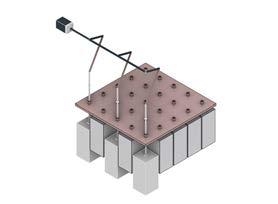
2 minute read
Robustness of Building Envelope
from BT Bundle 2020
by RuMoer
Robustness of Building Envelope Investigating Robust Design Solutions for Energy Efficient Educational Buildings in Future Climate Scenario.
Climate change has a progressive nature; thus, our buildings must be designed to be adaptive and resilient towards changing climate conditions. Passive design strategies applied to the building envelope are crucial in reducing the energy demand and provide thermal comfort. However, it is essential to understand their performance in the presence of climate uncertainties. Therefore, the study investigated different passive strategies that could enhance the robustness of a building envelope to adapt and provide a comfortable indoor environment with the advent of changing climate in the future.
Advertisement
The study focused on the educational buildings as the thermal discomfort due to overheating will certainly affect the productivity of the students. The study employed literature studies, analytical and dynamic simulations methods to develop workflows to indicate the extent of overheating risk in 2050 and 2085 climate scenario for both mechanically and naturally ventilated case studies. The workflows were also used for determining numerous passive design solution packages. The study used the statistical method of “best-case and worst-case scenario” to analyse the robustness of these solution packages. The study concluded that reducing window to wall ratios, fixed or dynamic shading, increasing albedo effect of the building envelope and mixed-mode ventilation strategy with PCM panels are the most robust passive design solutions. However, the study also found that ventilative cooling would have limited potential in reducing overheating and providing comfort in the latter part of the century.
For a robust design, it is essential to include the uncertainties of future climate change into the early design stage. Therefore, as a part of the research, an analytical tool was developed, keeping the architects and designers in mind. The “designoriented transformative tool” aka D.O.T.T. was designed to incorporate robustness evaluation into the design process. The tool aims at facilitating architects and designers to make informed decisions based on the impact of their design on indoor comfort in future by incorporating robustness at the early stages of design.
Reducing Window -Wall Ratio

Fixed and Dynamic Shading Devices

Light surface paints at building envelope to increase the albedo effect
54% reduction in discomfort hours in 2050

Mixed Mode Ventilation with PCM panels
43% reduction in discomfort hours in 2085
Adaptive strategies in a temperate climate, applicable to building envelope facilitating robustness of energy efficient educational buildings by reducing the risk of overheating in future climate change scenario.










